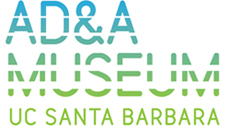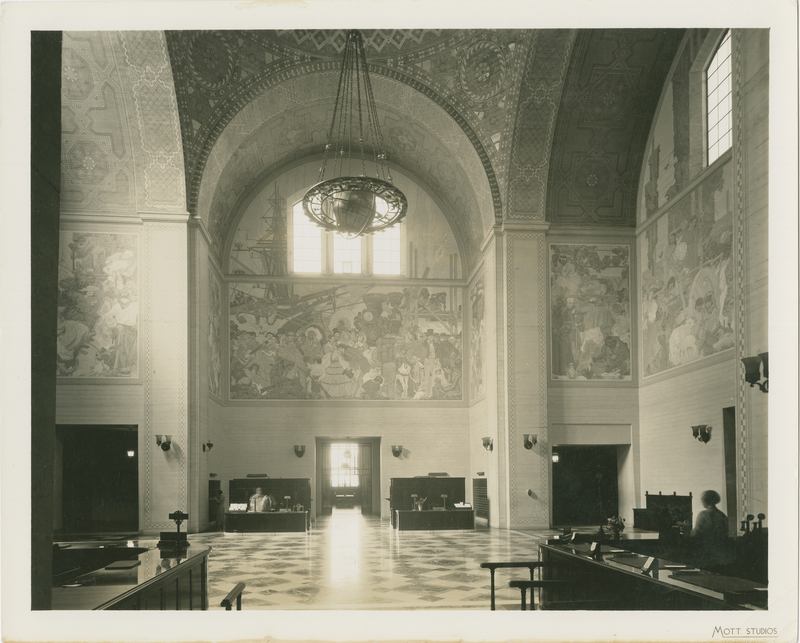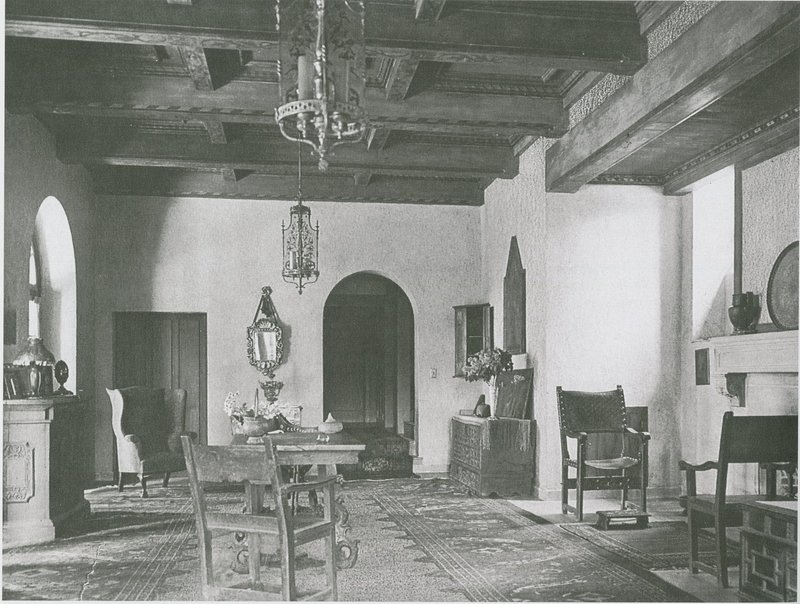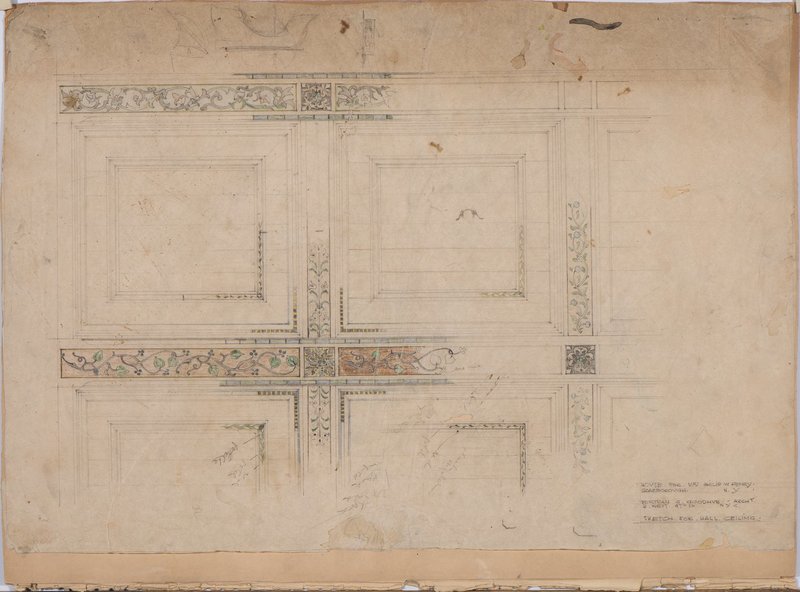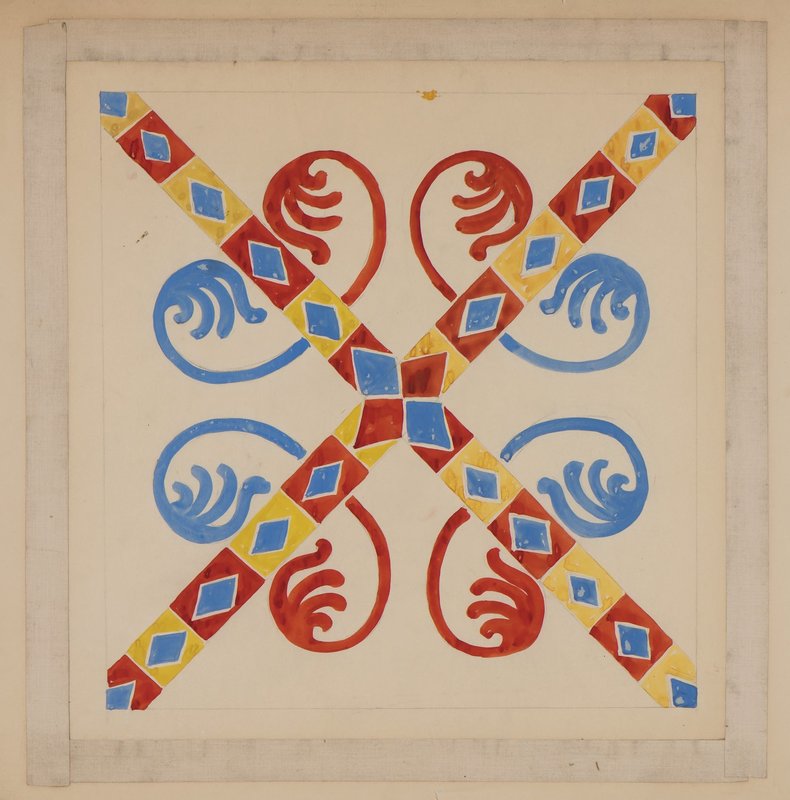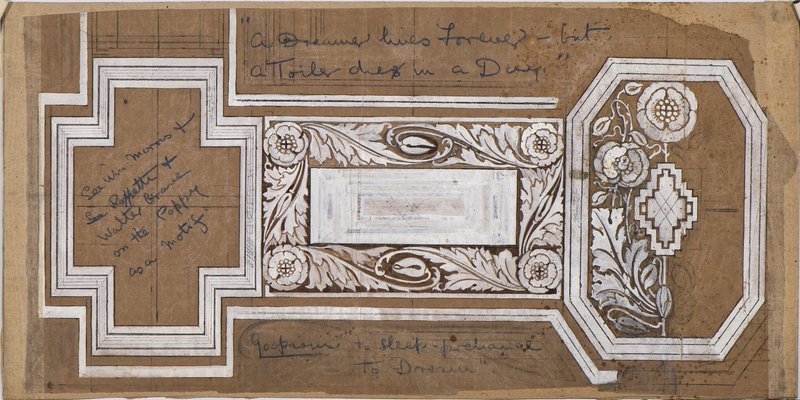Architecture and Decoration
Bertram Goodhue Commissions
During her early career, Lloyd maintained an ongoing professional association with the architect Bertram Goodhue, who is credited for developing the Spanish Colonial Revival style, popularized through his designs for the 1915 Panama-California Exposition in San Diego. Goodhue first noticed Lloyd’s work at an exhibition held at the Architectural League of New York. She became the first and only woman to work in his drafting room, and through him obtained several mural commissions.
In 1917, Goodhue commissioned Lloyd to create a decorated ceiling for the Henry House in Scarborough, New York. The residence, conceived by Goodhue in a mixture of English and Spanish styles, stands today, although a fire in 1947 destroyed Lloyd’s work. Lloyd also contributed to the mural decoration for the rotunda of the Los Angeles Central Library. The building was designed by Goodhue during the 1920s, and its completion overseen by architect Carleton Winslow after Goodhue died in 1924. The rotunda contains a mural cycle of four panels showing historical scenes by muralist Dean Cornwell. Its ceiling is decorated with stenciled motifs by artist Julian Garnsey. Exactly which areas Lloyd painted remain unclear, although since she worked with Cornwell it is likely that the patterned borders surrounding his murals are hers.
Decorated Ceilings
Lloyd's archive contains numerous examples of painted ceilings, documented in photographs, and in color studies. Such projects often involved the decoration of exposed ceiling beams. In instances where the beams crossed to create a grid of recessed squares, or "coffers," the overall effect was called a coffered ceiling. Lloyd decorated both beams and coffers with geometric and floral patterns that painted by means of stenciling. Stencils had the advantage of ensuring regularity, and allowed for more rapid coverage than hand outlining would. Whereas many of Lloyd's decorated ceilings remain only as black and white photographs, her sketches, by which she communicated her designs to architects and clients, reveal the vibrant color palette in which she often worked.
Lloyd's profession required that she think in three dimensions, and integrate her works with a building's architecture. The two studies below are designs for decorated ceiling beams, with blank spaces that delineate the intersection of a vertical post. In the color sketch, an added notation (or nota bene marked "N.B."), likely penciled in by the commissioningn architect, specifies that all painted highlights on the design must correspond with the direction from which the room is lit.
